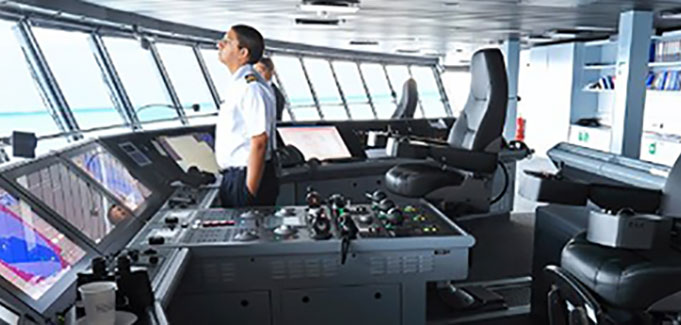The marine environment is very different from the usual kinds of places LCD monitors are found. Hence marine LCD monitors need to be built with a number of features and technologies to allow them to cope with this extreme environment, and to provide operators with a usable solution.
Waterproofing
The most obvious factor in the marine environment is the presence of water. When electronic equipment is used in a boat, there is always the chance of water being splashed onto it. This is especially likely to happen in heavy seas, even if the equipment is installed indoors. However the actual IP rating required for a marine LCD monitor still depends on where it is installed in the boat. Monitors installed outdoors will obviously need the maximum level of protection (IP67), however when installed inside an equipment room in a ship, the protection level required is typically only IP65 for the front panel of the monitor, and IP54 for the back. For a detailed explanation of what these IP numbers mean, please refer to Wikipedia.Corrosion
The salty ocean is always evaporating and splashing into the air, which produces salty water vapors in the air. Metals tend to corrode (e.g. iron and steel go rusty) very quickly in the presence of salty water or salt vapors, as it accelerates the oxidation process. Hence the marine environment presents a challenge for equipment made from various metals. Marine LCD monitors thus need to be constructed from more inert metals such as stainless steel, or else the metal components must be protected from corrosion, using processes such as powder coating and anodizing. In addition, the printed circuit boards inside LCD monitors have small metal parts, including copper tracks on the board surfaces, component leads and solder pads. These are also subject to corrosion in this environment, so the best way to protect these sensitive parts is with Conformal Coating. In the process of conformal coating, the circuit board assembly factory coats the assemblies with a layer of transparent conformal coating material. After this, a UV light inspection, is done to ensure the full coverage of the coating.Shock and Vibration
For successful long term usage on marine platforms such as ships and boats, marine LCD monitors need to tolerate a high level of shock and vibration. On a large ship platform, it might seem like the ship is very smooth, but in reality there is often a humming and vibration coming from the engines, gear boxes, propellors etc. In addition, ships and smaller boats must be able to handle the roughest of sea states, which can literally throw a vessel around with huge amounts of force. It is in these treacherous conditions that people rely on their electronic equipment the most, so the equipment must be designed to operate flawlessly under even the highest levels of shock and vibration.Wide Temperature
As marine vessels can be taken anywhere in the world, they must be rugged enough to cope with the coldest and hottest of environments. Hence for indoor marine monitors they should be rated for at least 0 to 50 degrees C. Outdoor marine monitors need an even wider temperature range if they are to operate in all weather conditions.Brightness and Dimming
Typically marine LCD monitors are used in places where there are also windows (or periscopes for submarines), hence the light levels will vary from the brightest sunlight down to the darkest night. In bright sunlight, regular LCD monitors become unreadable, so it is important for marine LCD’s to use technologies to make the screen readable in direct sunlight. This is usually done using a super bright LED backlight, and with additional technologies such as a transflective LCD screen, and anti-reflective coating. In addition, in the darkest night conditions, the operators need to preserve their night vision so they can see outdoors, hence the LCD monitor needs to be able to operate with an extremely low brightness level, much below any normal LCD monitor’s brightness setting allows. To make it easy for the operator to adjust to the conditions, the brightness is best controlled with a rotary knob on the front of the monitor.Optical Bonding
Optical Bonding is defined as “The affixing of two rigid optical elements using transparent adhesive to reduce reflectance and provide additional protection”. The main benefits of using optical bonding on LCD monitors are:- Increased sunlight readability up to 400%
- Increased impact resistance up to 300%
- Increased durability to shock & vibration
- Increased scratch resistance up to 300%
- Enables resistance to extreme temperatures
- Enable thinner and lighter display designs
- Prevents condensation and fogging
- Resists stains, dirt, dust, scratches and moisture


